21 Product Management Frameworks
Effective product management is critical to the success of any product development process. It helps to ensure that everything to be done matches the needs or pain points of customers and that resources are optimally used. This means that product managers must be methodical in their approach.
Frameworks can help with this methodology, providing both a comprehensive and objective process for things such as opportunity evaluation, prioritization, and requirements definition. Below are 21 must-know frameworks for anyone practicing the craft of Product:
1. Minimum Viable Product
Credited to Lean Startup author Eric Reis, this framework emphasizes the importance of learning when developing new products. The strategy, which is also called Lean Software Development, calls for the development of a minimal (or bare-bone) product for testing at first. The team builds a solution with minimal functionalities that are enough to solve a problem. This enables the gathering of customer feedback and validation of assumptions to know what can be done better.

Read more about the Minimal Viable Product (MVP) →
2. Working Backwards
This framework literally reverses the product development process, starting with what usually comes later. It was created and popularized by Amazon and, so, is sometimes called the Amazon method. Your product team begins by imagining that the product has been built to identify whether the customer’s problem has been solved.
At the start, you write a press release announcing the product’s availability. The document describes the problem and what value the product delivers above existing alternatives. This helps to be really sure the product is worth building.

Read more about the Working Backwards→
3. North Star Framework
Introduced by Amplitude, this framework centers on a single, most important metric – the North Star Metric. Startup advisor Sean Ellis describes this metric as one that “best captures the core value that your product delivers to customers.” The North Star Metric is complemented by a number of key inputs that help to drive it. Your team works to impact these key inputs with everything it does every day.

Read more about the Northstar Framework→
4. Business Model Canvas
This model aims to help make clearer how the product team will create value and to shorten the product development cycle. The business model canvas provides a complete, high-level view of the different strategic points crucial for bringing the product to market.
Businesses of various sizes use this model to understand and describe their business models more efficiently. It comprises elements that may vary from one business to another and is typically used together with the Value Proposition Canvas and other strategic management tools.
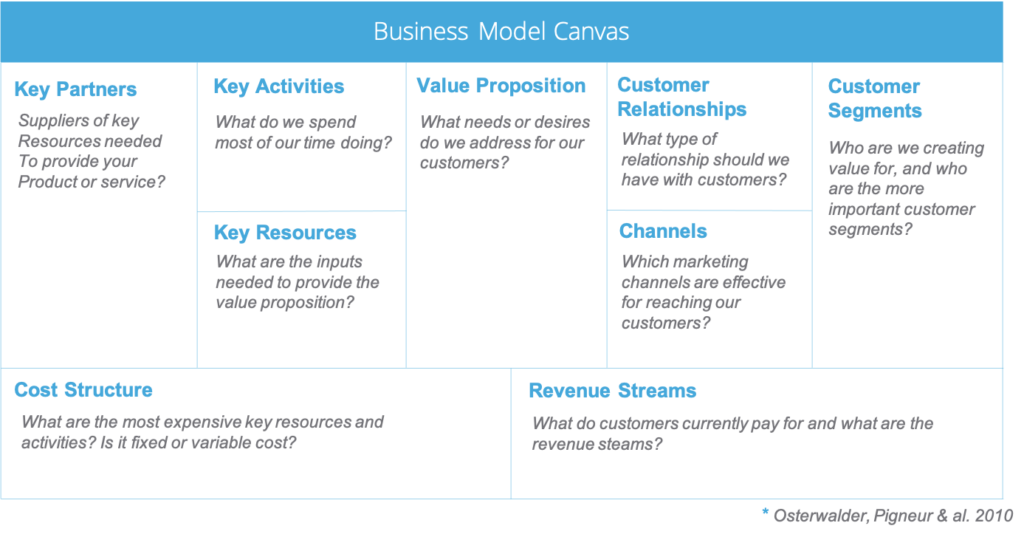
Read more about the Business Model Canvas →
5. Job To Be Done
Also known simply as JTBD, this framework for focuses on identifying customers’ needs, based on scenarios rather than personas. Championed by Clayton Christiansen, it calls for a deeper understanding of the customers, including their goal or “job” that they would need your product to do. Job To Be Done shifts the center of attention from the product to customers. It helps to grasp the customers’ thought processes when purchasing so that product teams can know what to focus on.
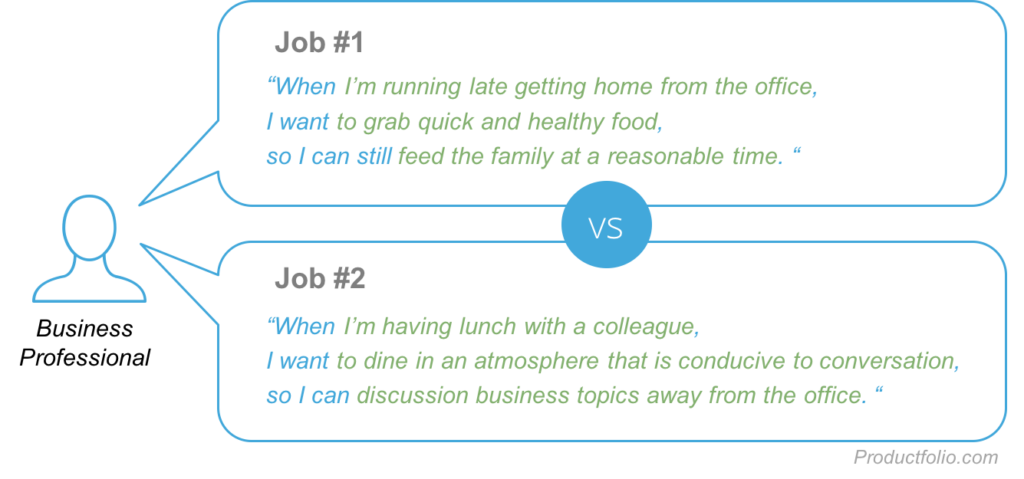
Read more about the Jobs To Be Done →
6. Opportunity Solution Tree
Developed by Teresa Torres, this framework is a visual representation of how you aim to attain your desired outcome. The diagrammatic tool was designed to make simpler the discovery process and to enable the proper prioritization of opportunities. Torres designed the framework to help product teams know and focus on “the big picture” in their work. It assists in properly thinking through any decisions to be taken.

Read more about the Opportunity Solution Tree →
7. Weighted Impact Scoring
This is a popular prioritization framework among top product managers. The weighted impact scoring model involves ranking initiatives or features using a simple scoring model. You start by identifying some key criteria and then assign a weight (in percentage) to each one showing how important they are. Initiatives are scored based on these criteria and ranked accordingly.
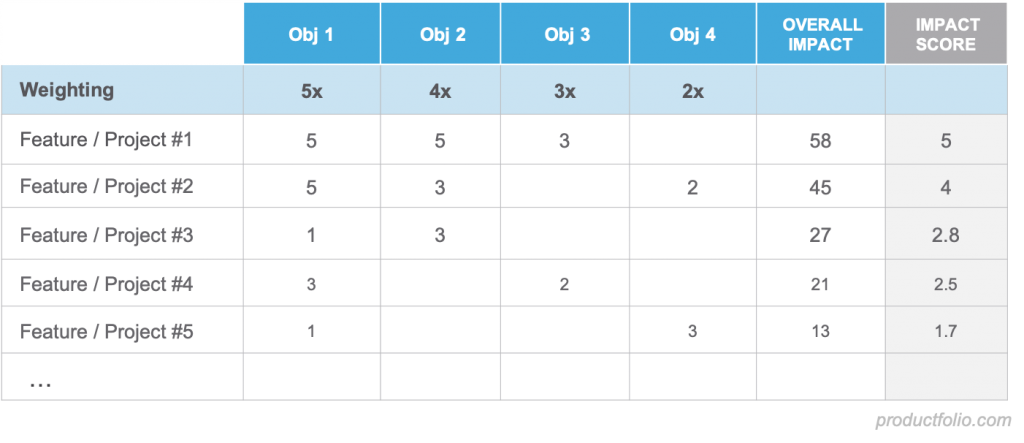
Read more about the Weighted Impact Scoring →
8. RICE Prioritization
This framework developed by the team at Intercom is a very simple one. It calls for the evaluation of product ideas based on four factors, which the name derives from: Reach, Impact, Confidence, and Effort. A final score is generated for each initiative using these criteria. All initiatives are ranked using their final scores that indicate relative values to the product and company.
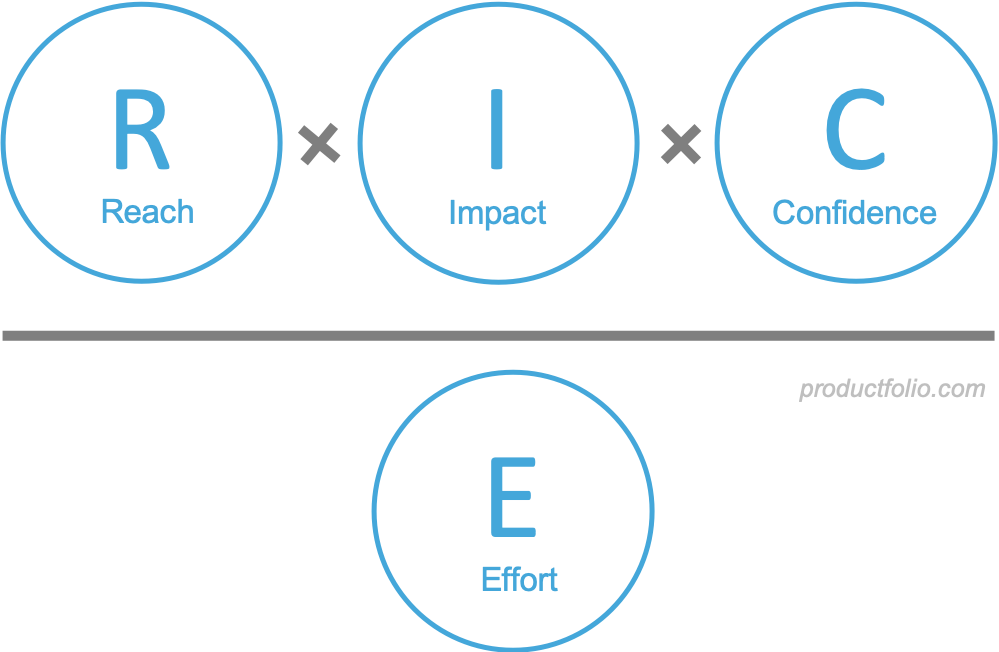
Read more about RICE Prioritization →
9. Design Sprint
Created by Jake Knapp at Google Ventures, Design Sprint is a five-step or five-day process that draws inspiration from design thinking. It aims at reducing the risk that could come with launching a product.
This design framework involves the team coming together to understand, design, prototype, and validate ideas before introducing a product or feature. It helps to quickly identify key problems as well as design and test their solutions.
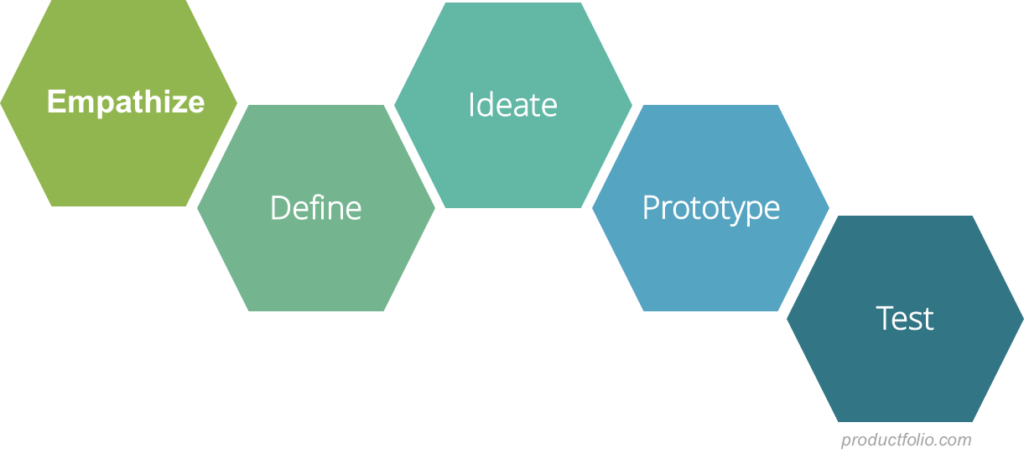
Read more about the Design Thinking →
10. Customer Journey Map
This is a visual representation of all the steps a typical prospect or customer takes when interacting with your product or service. The framework, sometimes called the 5 Es, helps to have a good grasp of the customer’s experience. It makes it easier for product managers to gain insights into customer behavior so that they can develop a strategy most fitting for the observed behavior.
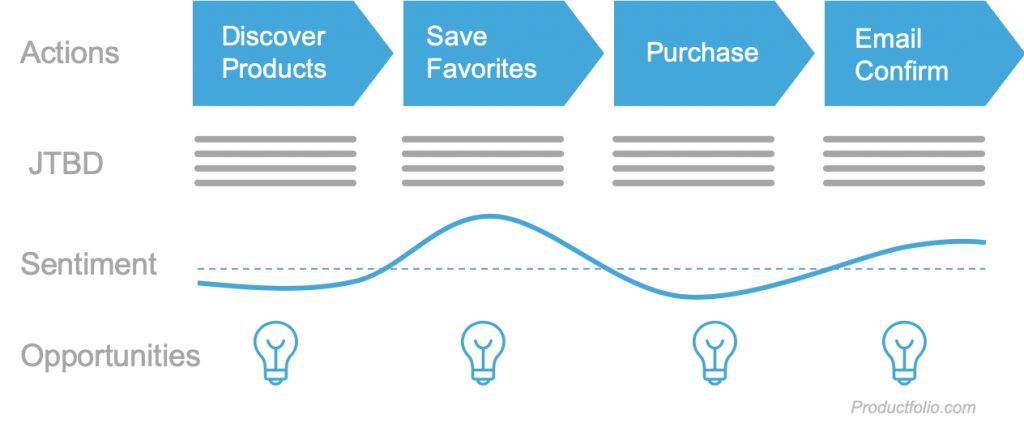
Read more about the Customer Journey Map →
11. Kano Model
Based on the ideas of Japanese professor Noriaki Kano, this framework is useful for identifying the attributes of a product that users will find most valuable. It features two axes: one showing how well a need is met and the other depicting how satisfied customers are as a result. The Kano Model helps to identify those features that are more likely to delight customers. Prioritize features that deliver the most delight relative to the cost of implementation.
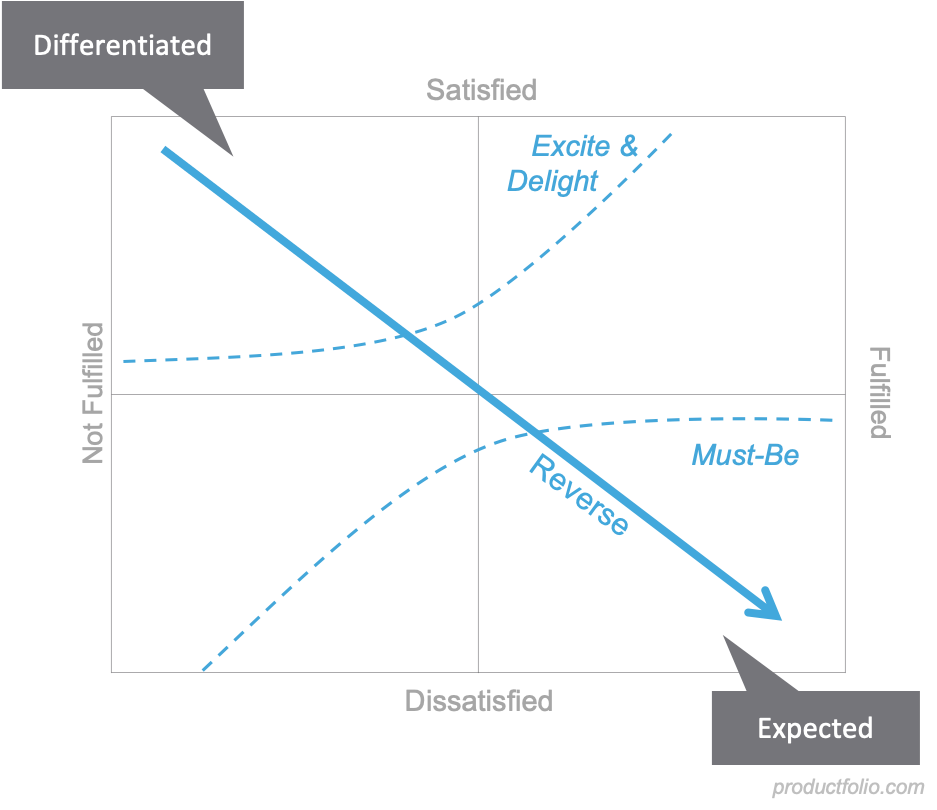
Read more about the Kano Model →
12. Spotify Squads
This model shows what the culture that has helped Spotify to success is like. It involves product squads – small, cross-functional teams – that are autonomous. The framework is about empowering squads to choose what to work on to achieve a desired outcome rather than having tasks assigned to them. A key requirement is that the chosen work must match an organization’s overall strategy.
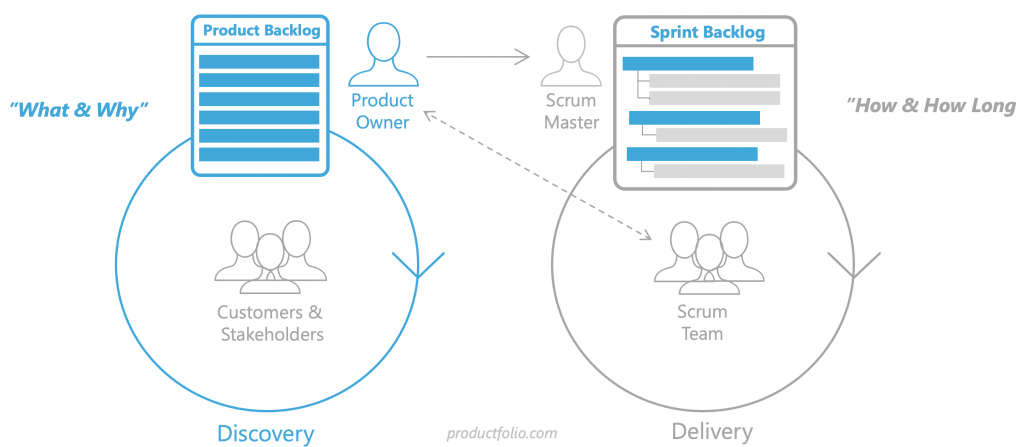
Read more about Spotify Squads →
13. GIST Planning
The name of this framework comes from factors you need to guide true agile planning and execution, according to its creator. These are Goals, Ideas, Steps, and Tasks. Developed by Itamar Gilad, the GIST Planning framework is inspired by Lean Startup Growth Marketing and behavioral economics principles. Its goal is to lower management overhead, advance team autonomy, and expedite development.
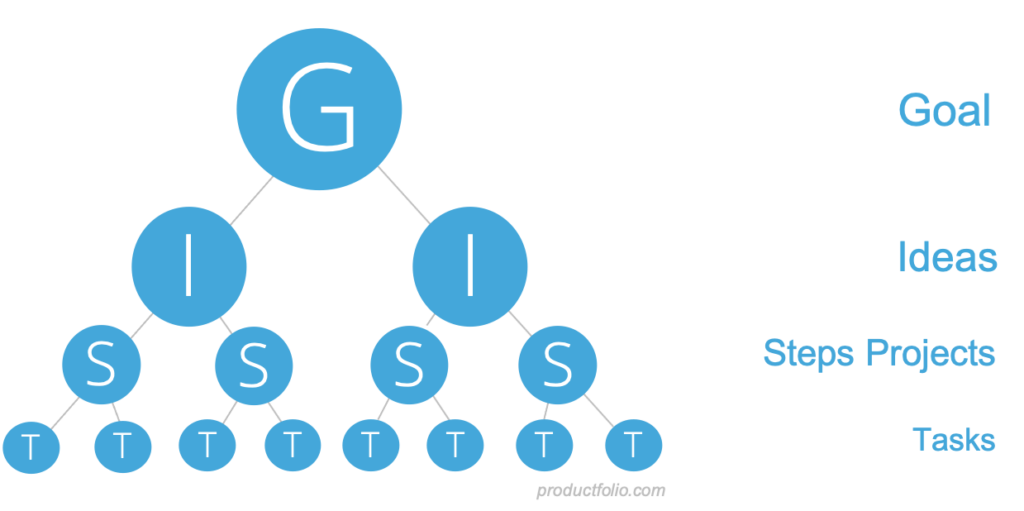
Read more about the GIST Planning →
14. 3 Pillars of Product
This 3-part framework created by product strategist Neal Cabage defines the most important elements or aspects of product management. These three key parts are product or opportunity discovery, product planning, and product development. Product managers and teams can use the model as a good guide for developing winning solutions.
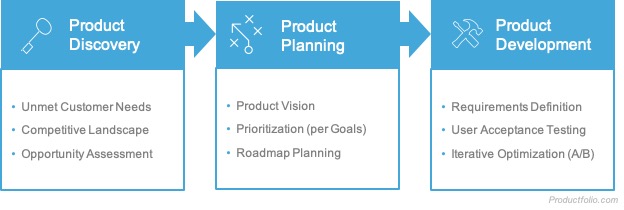
Read more about the 3 Pillars of Product Management→
15. Double Diamond
Developed by the British Design Council, the Double Diamond framework is a design process model involving four phases or elements. These are Discovery, Definition, Development, and Delivery. The four stages apply to all approaches for creating something new, according to its creators. This process is iterative and involves two types of thinking: divergent and convergent.
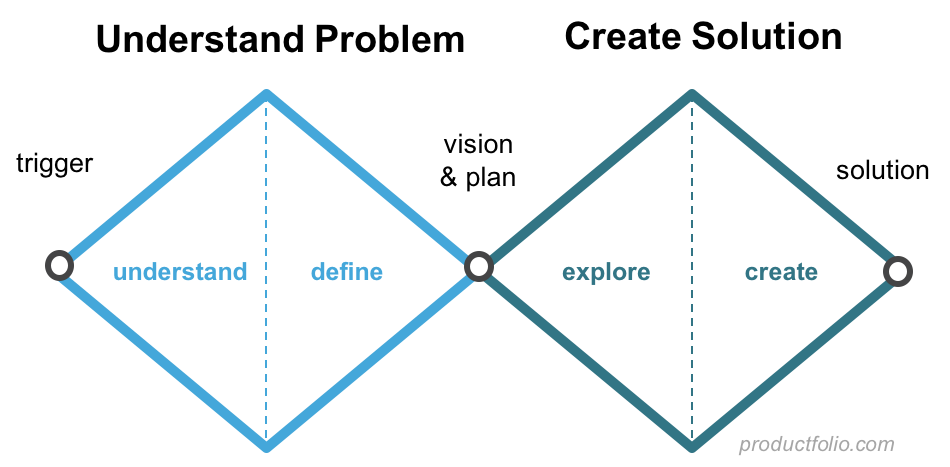
Read more about the Double Diamond→
16. DACI
DACI is an acronym standing for Driver, Approved, Contributor, Informed. It is a roles and responsibilities framework that helps drive team alignment by clarifying who is responsible for what within a team or project. It is similar to the more well-known RACI framework, but DACI is particular relevant to Product Management because it emphasis an ownership model rather than a delivery model, which better aligns to the Agile Product ethos. Use this framework when setting out on a new initiative or configuring a new team, to clearly articulate the PM’s responsibilities and how to interact with leadership, stakeholders, and other contributors. The below framework exemplifies how one might articulate ownership within the product development team more probably.
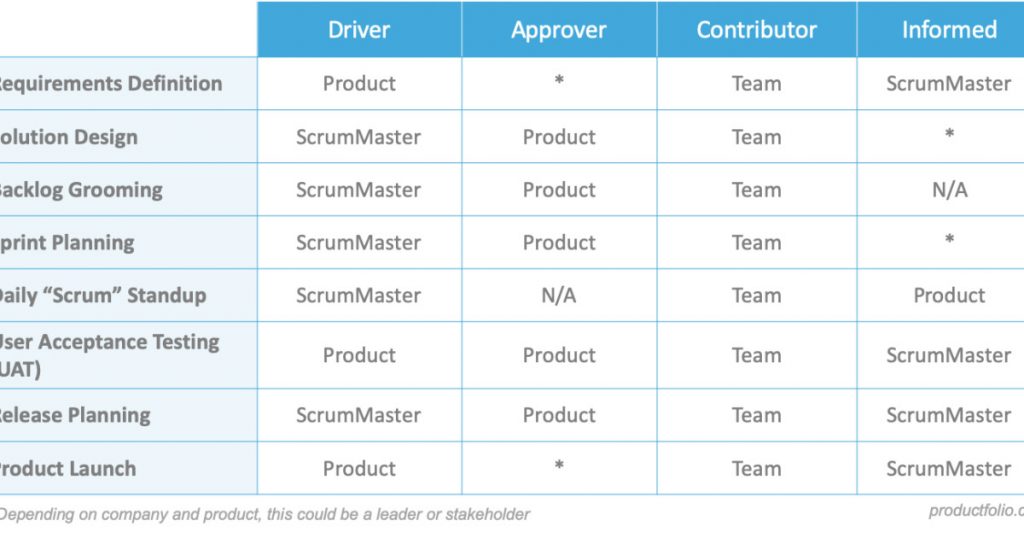
Read more about the DACI framework →
17. Product Team Competencies
This is yet another of the frameworks created by Cabage. Product Team Competencies was designed to make the clear vital skills that are needed for project management, especially when it comes to digital products. The model is a 2-dimensional spectrum of skills or capabilities. It places product leaders on one of two sides: strategic or tactical and external or internal. The Product Team Competencies framework is useful for assessing, conveying, and enhancing overall team capabilities.
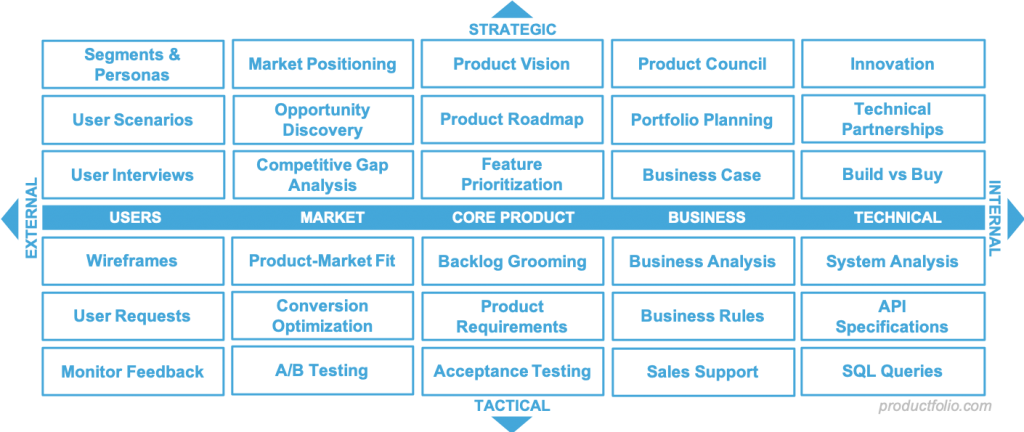
Read more about the Product Team Competencies →
18. CIRCLES Method
A design framework by Lewis Lin, the CIRCLES Method provides a guide on how to provide thoughtful, detailed responses to design questions. It is useful for deeply understanding what to design and why it is needed. The framework’s name comes from the steps to follow when answering design questions:
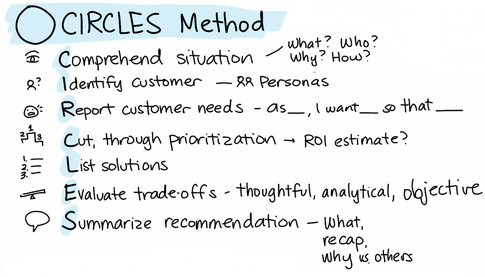
Read more about the Circles Method →
19. Product-Market Matrix
This framework is also known as the Ansoff Matrix after the mathematician Igor Ansoff who developed it in 1957. The Product-Market Matrix, or the Product-Market Expansion Grid, is a 2×2 matrix showing four possibilities: market development, product development, market penetration, and diversification. Businesses typically use it to analyze and devise their growth strategies.
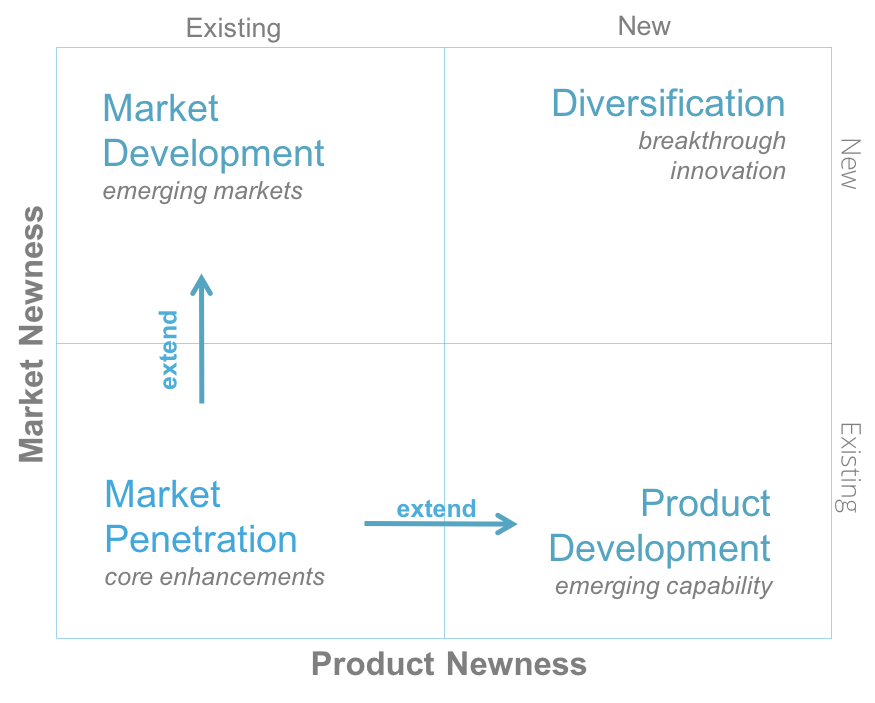
Read more about the Product-Market Matrix →
20. Innovation Adoption Curve
The Innovation Adoption Curve is a model of how and why a new product or innovation is adopted. Its creator, Everett Rogers, classified adopters into five categories: Innovators, Early Adopters, Early Majority, Late Majority, and Laggards. The framework highlights the need to approach each group differently when marketing.
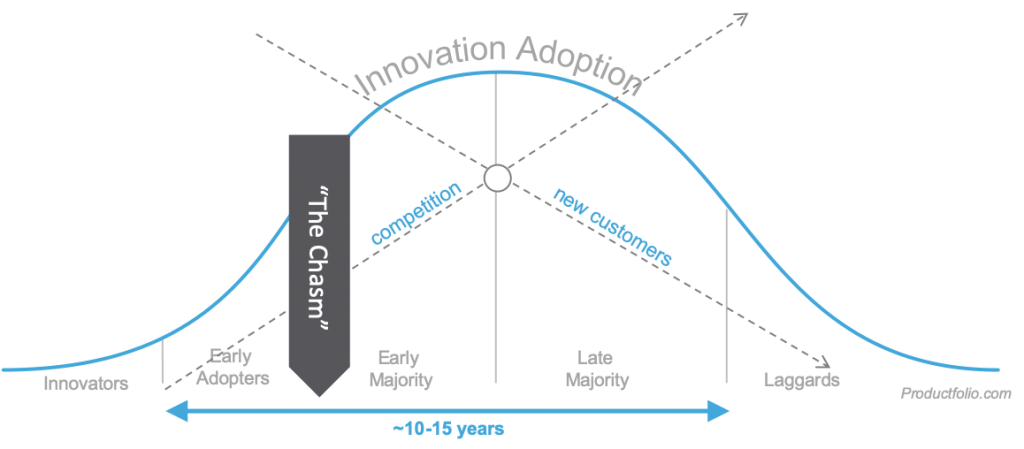
Read more about the Innovation Adoption Curve →
21. Hooked Method
Coming from Nir Eyal’s 2014 book “Hooked,” this model describes a user’s interactions with a product through four stages. It is a guide on how to build habit-forming products. The four steps or phases identified as being key for such products are trigger, action, reward, and investment.
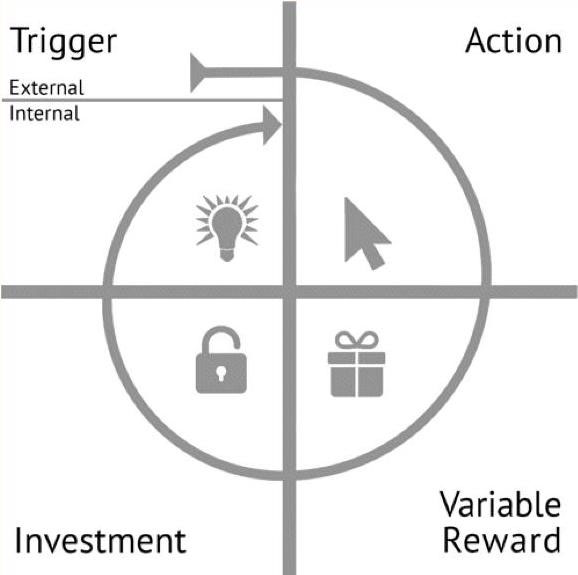
Read more about the Hooked Method →